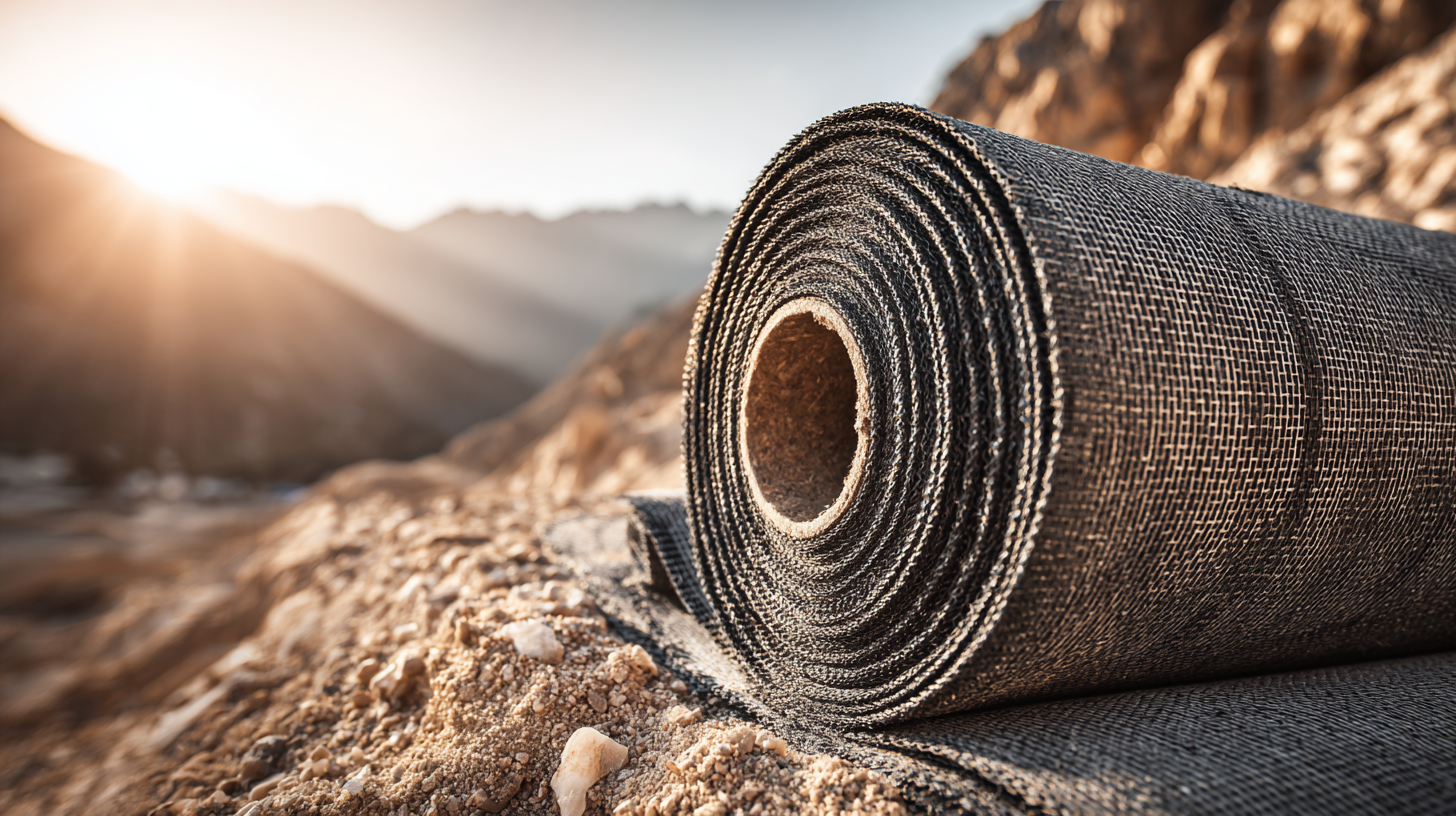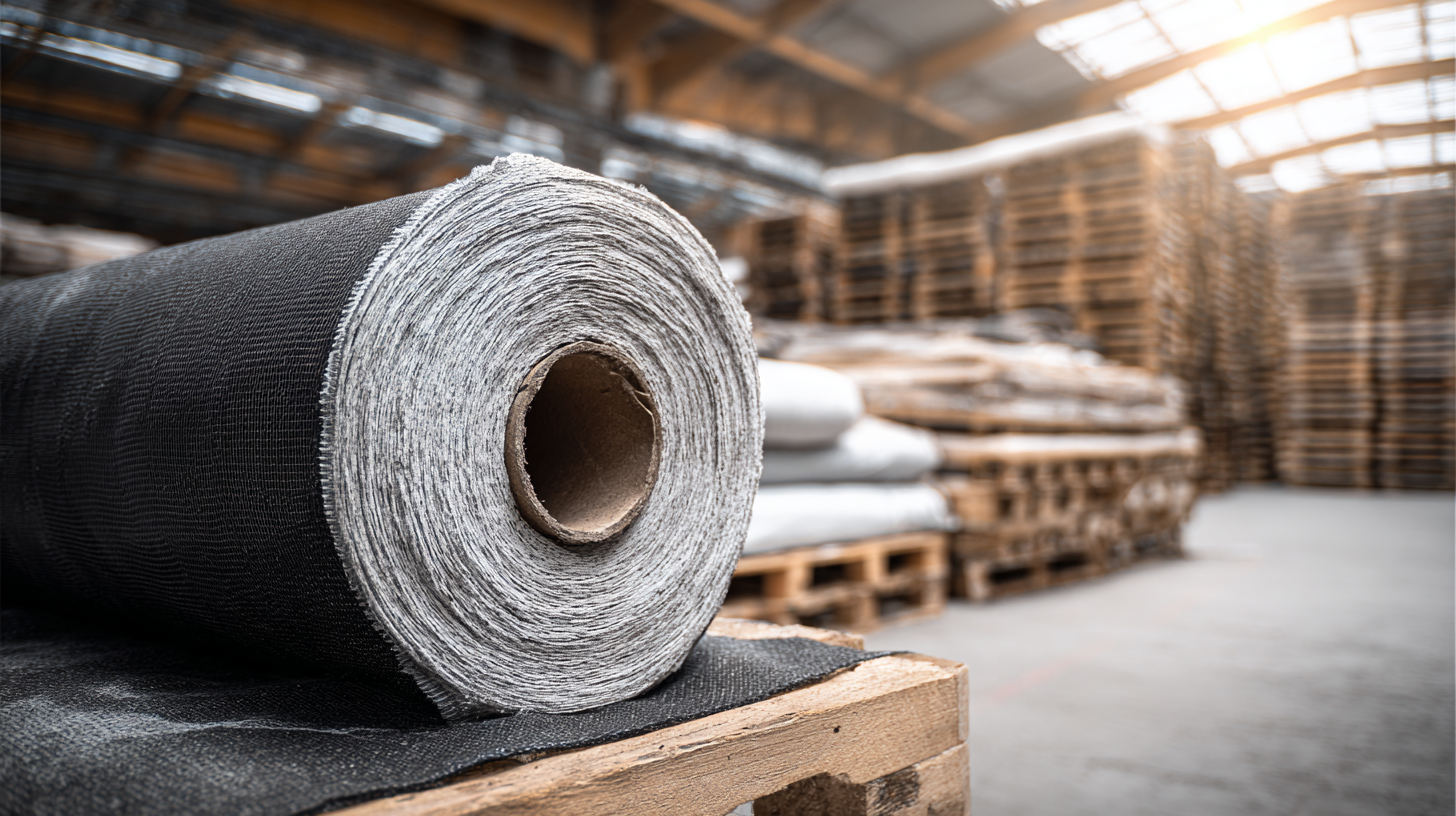In recent years, the construction and civil engineering industries have increasingly recognized the pivotal role of sustainability in project design and execution. According to a report by MarketsandMarkets, the global geotextile market is poised to reach USD 11.2 billion by 2025, primarily driven by the rising demand for woven geotextile fabric in various applications. This innovative material not only enhances soil stability and reduces erosion but also promotes sustainable practices by minimizing the need for harmful alternatives. By effectively managing water flow and providing critical support to infrastructure projects, woven geotextile fabric emerges as a vital solution for environmentally conscious construction.

As stakeholders in the industry seek to balance economic viability with ecological responsibility, adopting the best woven geotextile fabric in projects can unlock significant benefits, from cost savings to enhanced project longevity, ultimately contributing to a greener future.
 Geotextile fabrics are revolutionizing construction projects by providing sustainable alternatives to traditional materials. As cities strive for eco-friendliness, woven geotextiles emerge as a crucial component in soil stabilization and erosion control. These fabrics enhance drainage and retain soil, significantly improving the stability of weak ground conditions. With the introduction of biodegradable options, such as those made from natural fibers, the environmental impact of construction materials is further minimized, catering to eco-conscious builders and developers.
Geotextile fabrics are revolutionizing construction projects by providing sustainable alternatives to traditional materials. As cities strive for eco-friendliness, woven geotextiles emerge as a crucial component in soil stabilization and erosion control. These fabrics enhance drainage and retain soil, significantly improving the stability of weak ground conditions. With the introduction of biodegradable options, such as those made from natural fibers, the environmental impact of construction materials is further minimized, catering to eco-conscious builders and developers.
Moreover, the integration of geosynthetic materials not only reinforces weak soils but also opens doors for innovative project management approaches, where sustainability is a key consideration. By implementing modular frameworks, construction professionals can evaluate the benefits of new and reclaimed materials. This strategic sourcing can optimize both project efficiency and sustainability, ultimately ensuring that construction practices align with the pressing need for environmental stewardship. woven geotextiles, as versatile and sustainable materials, represent a significant shift towards a greener construction future, demonstrating how effective material choices can lead to impactful ecological and engineering outcomes.
Woven geotextiles play a pivotal role in erosion control and soil stabilization, effectively transforming project outcomes in both civil engineering and landscaping. According to the Federal Highway Administration, employing geotextile fabrics can reduce soil erosion by up to 60%, demonstrating their effectiveness in maintaining soil integrity in diverse applications. The high tensile strength of woven fabrics offers excellent resistance against differential settlement and uplifts, ensuring that infrastructure projects remain stable over time.
One of the essential tips for using woven geotextiles is to select the right material based on project specifications. High-quality woven geotextiles should have appropriate permeable characteristics to allow water flow while providing separation and reinforcement. Proper installation techniques, such as overlapping seams and ensuring adequate tension, are crucial for maximizing their effectiveness. Additionally, incorporating geotextiles in slopes can minimize surface runoff, further enhancing erosion control.
When considering soil stabilization, it’s essential to understand the specific soil conditions you’re working with. A geotechnical report can guide the selection of woven geotextiles that best suit the soil type. Monitoring and maintaining the surrounding environment post-installation will ensure long-term efficacy, offering a sustainable solution that not only mitigates erosion but also enhances soil health.
| Dimension | Details |
|---|---|
| Material Type | Woven Geotextile Fabric |
| Primary Use | Erosion Control and Soil Stabilization |
| Benefits | Enhanced stability, reduced erosion, improved drainage |
| Environmental Impact | Eco-friendly, recyclable materials |
| Durability | Long-lasting performance in harsh conditions |
| Installation Method | Easy to install with minimal equipment |
| Applications | Road construction, landscaping, drainage systems |
| Cost-Effectiveness | Reduces maintenance costs over time |
Utilizing woven geotextile fabric in environmental projects not only enhances sustainability but also offers significant cost benefits. According to a study by the Geosynthetic Institute, projects utilizing geotextiles can experience up to a 30% reduction in overall costs associated with soil erosion control and land stabilization. By acting as a filtration medium, woven geotextiles prevent soil loss while allowing water to flow through, thereby minimizing the need for additional drainage solutions and maintenance.
Tip: When selecting woven geotextiles, consider the fabric's tensile strength and permeability attributes, as these factors considerably impact long-term performance and cost-effectiveness. Investing in high-quality materials may lead to reduced frequency of replacement, thus saving money in the long run.
Furthermore, the effective implementation of woven geotextiles can significantly improve project timelines. A report from the American Society of Civil Engineers indicates that projects utilizing geotextiles can be completed 20% faster due to simplified construction processes. This efficiency not only reduces labor costs but also shortens the overall project duration, allowing for quicker returns on investment.
Tip: Always assess the specific environmental conditions of your project site. The right geotextile solution can help mitigate potential risks related to local soil types and moisture levels, ensuring optimal performance and reduced future costs.

When considering geosynthetic materials for construction and landscaping projects, woven geotextiles stand out due to their unique properties and advantages. Unlike non-woven geotextiles, which are often utilized for filtration and separation, woven geotextiles excel in offering tensile strength and stability. This makes them an ideal choice for applications requiring load distribution and reinforcement, such as roadways and embankments, where the integrity of the structure is paramount.
Additionally, woven geotextiles outperform some other geosynthetic materials, such as geomembranes, in terms of permeability and drainage capabilities. While geomembranes are primarily designed for containment, woven geotextiles facilitate water movement, preventing the buildup of hydrostatic pressure. This property enhances their longevity and effectiveness in various applications, including sediment control and soil stabilization projects. Furthermore, the durability of woven geotextiles means they can withstand harsh environmental conditions, making them a sustainable choice for any project aiming for long-term performance and ecological responsibility.
This chart illustrates the comparative benefits of using woven geotextile fabrics in various projects. The data below highlights key performance metrics such as water permeability, tensile strength, and durability against other geosynthetic materials.
Woven geotextile fabrics have emerged as a vital component in various sustainability initiatives, demonstrating their effectiveness across numerous projects. One compelling case study is the application of woven geotextiles in a large-scale stormwater management system in an urban area. By utilizing these fabrics, the project successfully reduced erosion and improved water quality in nearby waterways, showcasing the fabric's ability to filter sediments and pollutants while allowing proper drainage. This integration not only protected the environment but also extended the lifespan of local infrastructure, proving that woven geotextiles are crucial in eco-friendly engineering solutions.
Another notable example is the use of woven geotextiles in road construction on a sensitive ecological site. Engineers implemented these fabrics to reinforce the ground and minimize soil movement during heavy rains. The result was a lesser impact on the surrounding flora and fauna, as the woven geotextiles provided a stable base without disrupting the natural habitat. This project illustrates how woven geotextile fabrics can enhance structural integrity while prioritizing environmental conservation, serving as a model for future development endeavors committed to sustainability.
